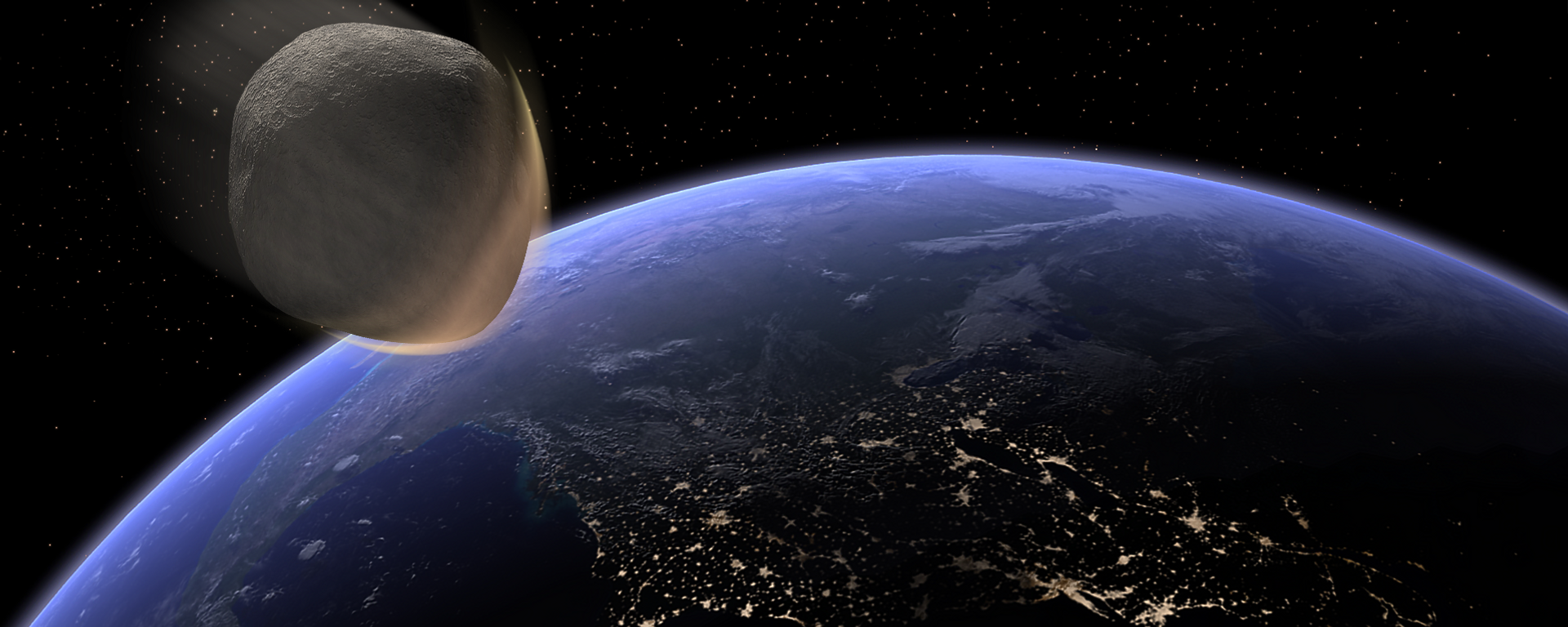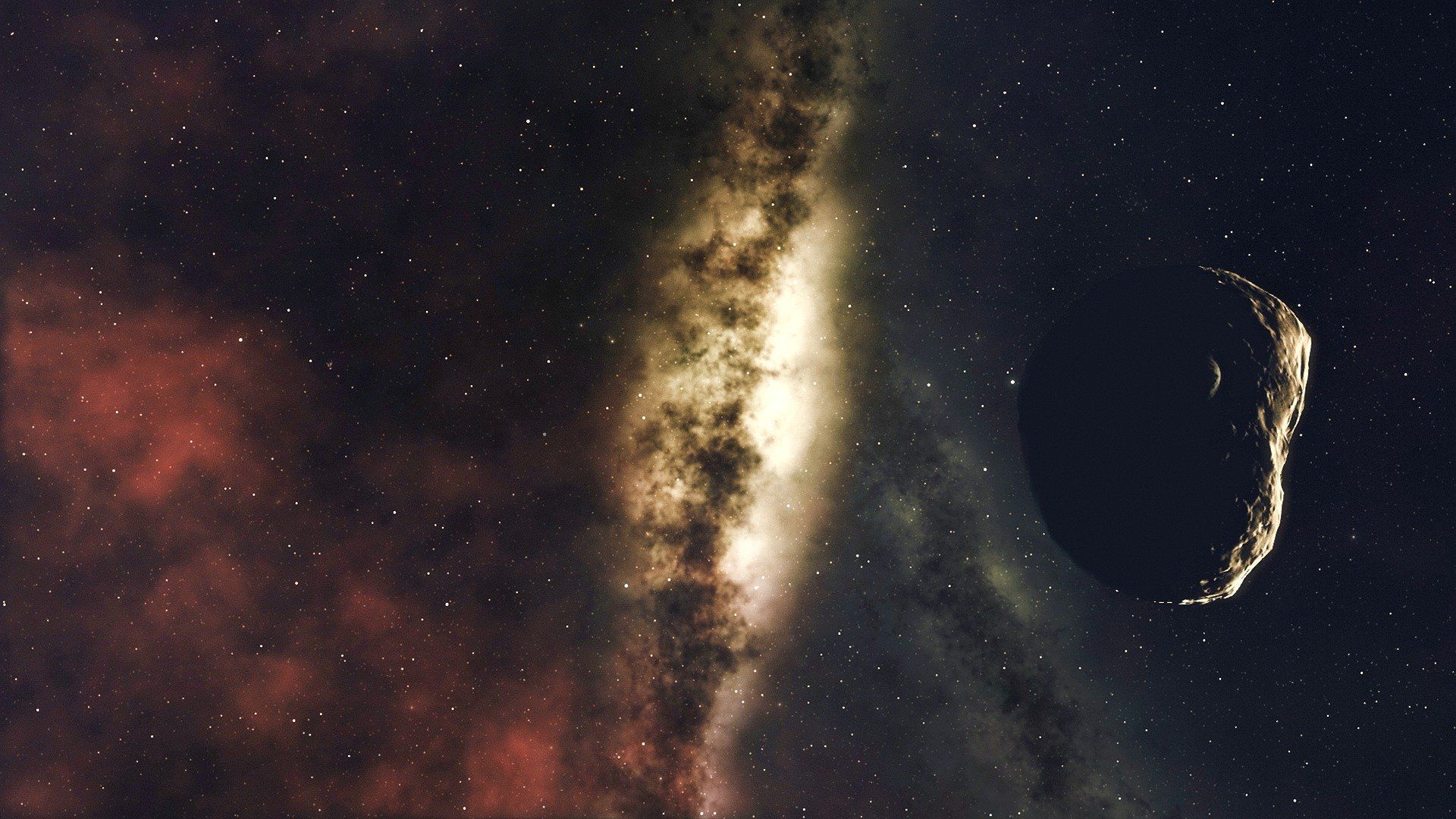https://sputnikglobe.com/20221101/planet-killer-asteroid-able-to-wreak-devastating-impact-on-life-found-in-inner-solar-system-1102908053.html
'Planet Killer' Asteroid Able to Wreak 'Devastating Impact on Life' Found in Inner Solar System
'Planet Killer' Asteroid Able to Wreak 'Devastating Impact on Life' Found in Inner Solar System
Sputnik International
Near-Earth objects (NEOs) are asteroids and comets with orbits that bring them within 195Mln kilometers of the Sun, or, potentially, very close to intersecting... 01.11.2022, Sputnik International
2022-11-01T09:25+0000
2022-11-01T09:25+0000
2022-11-03T19:33+0000
near-earth objects (neo)
science & tech
asteroid
asteroid
killer
planet
earth
https://cdn1.img.sputnikglobe.com/img/07e5/03/1a/1082462721_0:0:1920:1080_1920x0_80_0_0_1eebc09c81b8b497259744e5659a0c5a.jpg
Three potentially “killer asteroids” have been spotted by astronomers hiding in the glare of the Sun. What makes the discovery of the trio of Near-Earth Objects (NEOs) even more noteworthy is that one of them is the largest potentially hazardous object for our planet Earth to be identified in the past eight years.The asteroids from within the orbits of Earth and Venus are typically difficult to observe as the Sun shields them from telescope observations. However, using the Dark Energy Camera (DECam) mounted on the Víctor M Blanco 4-meter Telescope at the Cerro Tololo Inter-American Observatory in Chile, an international team of scientists conducted a sweeping so-called “twilight survey” to scrutinize the area, according to findings published by the team in The Astronomical Journal.According to the lead author of the study, one of the asteroids, called 2022 AP7, is 1.5 kilometers (0.9 miles) wide.Asteroids or comets that orbit the Sun in a path near that of the Earth, within 48.3 million kilometers (30 million miles) from our planet, are called Near-Earth objects (NEOs).Their sizes range from several meters to tens of kilometers. NEOs are typically monitored by astronomers as they could hit our planet and, depending on their size, wreak considerable damage. The newly discovered large asteroid 2022 AP7 has an orbit that could bring it within Earth’s path in the future, the team estimated. The NEO crosses our planet’s orbit when Earth is on the opposite side of the Sun in a pattern set to continue for centuries, revealed the study. However, they speculate that over time, the “killer” asteroid’s orbital movement will become more in sync with Earth’s. Although it “will stay well away from Earth”, astronomers are unable to estimate just how dangerous the asteroid’s orbit may become.An NEO measuring 1 kilometer (0.6 mile) or larger “would have a devastating impact on life as we know it,” warned Sheppard. He added that it could become a “mass extinction event such as hasn’t been seen on Earth in millions of years.”The orbits of the other two asteroids - 2021 LJ4 and 2021 PH27 - are not estimated to pose any risk to Earth. The latter of these has been identified by the team as the closest known asteroid to the Sun.Over the coming years, the team will continue their surveys, hoping to zoom in on more “planet killer” asteroids. At present, scientists claim there are about 1,000 NEOs larger than a kilometer in size, with surveys over the past decade indicating that about 95 percent of them have been identified.According to the scientist, the DECam survey has offered a “unique chance to understand what types of objects are lurking in the inner Solar System.”
https://sputnikglobe.com/20221011/nasas-dart-spacecraft-alters-orbit-of-asteroid-in-planetary-defense-test-mission-1101737744.html
https://sputnikglobe.com/20221020/asteroid-that-wiped-out-dinos-triggered-megatsunami-with-mile-high-waves-1102437121.html
earth
Sputnik International
feedback@sputniknews.com
+74956456601
MIA „Rosiya Segodnya“
2022
News
en_EN
Sputnik International
feedback@sputniknews.com
+74956456601
MIA „Rosiya Segodnya“
Sputnik International
feedback@sputniknews.com
+74956456601
MIA „Rosiya Segodnya“
near-earth objects (neo), science & tech, asteroid, asteroid, killer, planet, earth
near-earth objects (neo), science & tech, asteroid, asteroid, killer, planet, earth
'Planet Killer' Asteroid Able to Wreak 'Devastating Impact on Life' Found in Inner Solar System
09:25 GMT 01.11.2022 (Updated: 19:33 GMT 03.11.2022) Near-Earth objects (NEOs) are asteroids and comets with orbits that bring them within 195Mln kilometers of the Sun, or, potentially, very close to intersecting Earth's orbit. Scientists estimate there are about 1,000 NEOs larger than 1 kilometer in size, with astronomers keeping a close eye on them because of the potential risk of impact.
Three potentially “killer asteroids” have been spotted by astronomers hiding in the glare of the Sun. What makes the discovery of the trio of
Near-Earth Objects (NEOs) even more noteworthy is that one of them is the largest potentially hazardous object for our planet Earth to be identified in the past eight years.
The asteroids from within the orbits of Earth and Venus are typically difficult to observe as the Sun shields them from telescope observations. However, using the Dark Energy Camera (DECam) mounted on the Víctor M Blanco 4-meter Telescope at the Cerro Tololo Inter-American Observatory in Chile, an international team of scientists conducted a sweeping so-called “twilight survey” to scrutinize the area, according to findings
published by the team in The Astronomical Journal.
“Our twilight survey is scouring the area within the orbits of Earth and Venus for asteroids. So far we have found two large near-Earth asteroids that are about a kilometer across, a size that we call planet killers,” Scott Sheppard, an astronomer at the Earth & Planets Laboratory of the Carnegie Institution for Science in Washington, DC, said in a media statement.
According to the lead author of the study, one of the asteroids, called 2022 AP7, is 1.5 kilometers (0.9 miles) wide.

11 October 2022, 19:01 GMT
Asteroids or comets that orbit the Sun in a path near that of the Earth, within 48.3 million kilometers (30 million miles) from our planet, are called Near-Earth objects (NEOs).
Their sizes range from several meters to tens of kilometers. NEOs are typically monitored by astronomers as they could
hit our planet and, depending on their size, wreak considerable damage. The newly discovered large asteroid 2022 AP7 has an orbit that could bring it within Earth’s path in the future, the team estimated. The NEO crosses our planet’s orbit when Earth is on the opposite side of the Sun in a pattern set to continue for centuries, revealed the study.
However, they speculate that over time, the “killer” asteroid’s orbital movement will become more in sync with Earth’s. Although it “will stay well away from Earth”, astronomers are unable to estimate just how dangerous the asteroid’s orbit may become.
An NEO measuring 1 kilometer (0.6 mile) or larger “would have a devastating impact on life as we know it,” warned Sheppard. He added that it could become a “mass extinction event such as hasn’t been seen on Earth in millions of years.”
The orbits of the other two asteroids - 2021 LJ4 and 2021 PH27 - are not estimated to pose any risk to Earth. The latter of these has been identified by the team as the closest known asteroid to the Sun.
Over the coming years, the team will continue their surveys, hoping to zoom in on more “planet killer” asteroids. At present, scientists claim there are about 1,000 NEOs larger than a kilometer in size, with surveys over the past decade indicating that about 95 percent of them have been identified.
“The inner asteroids are rare, and deep images are needed because asteroids are faint and you are fighting the bright twilight sky near the Sun as well as the distorting effect of Earth’s atmosphere. The DECam can cover large areas of sky to depths not achievable on smaller telescopes, allowing us to go deeper, cover more sky, and probe the inner Solar System in ways never done before,” Sheppard said.
According to the scientist, the DECam survey has offered a “unique chance to understand what types of objects are lurking in the inner Solar System.”

20 October 2022, 04:00 GMT





